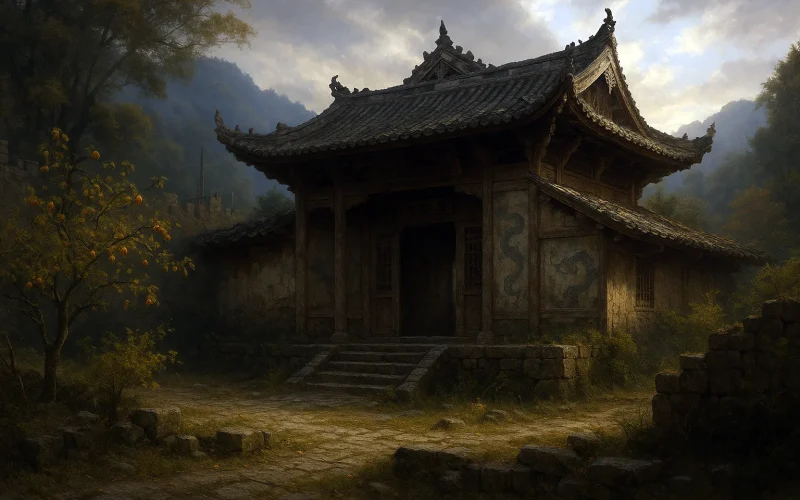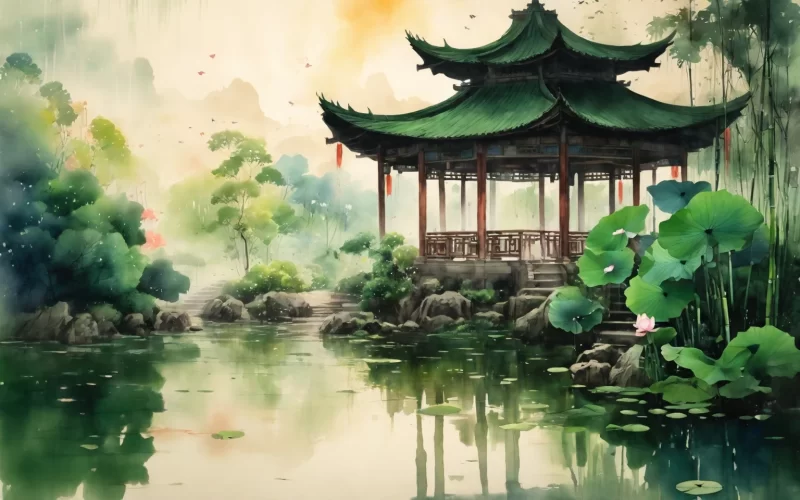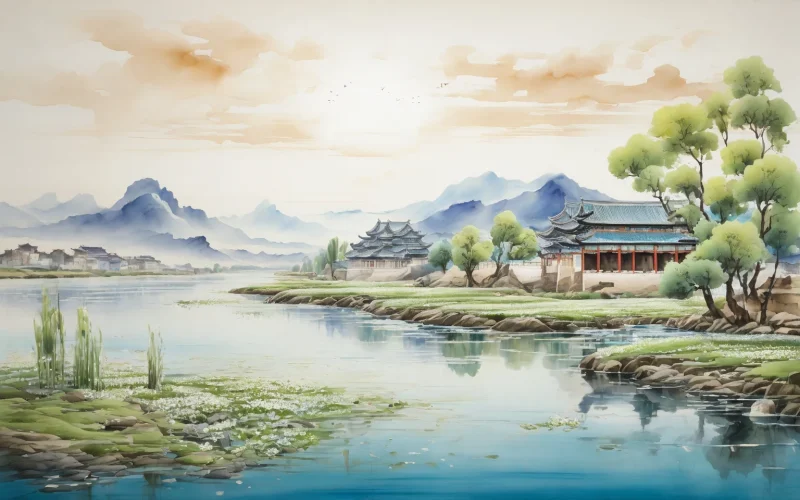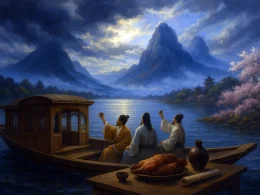Your temple stands in empty hills,
The autumn breeze with sunset fills.
Oranges still hang in your courtyard;
Dragons on your old walls breathe hard.
Over green cliff float clouds in flight;
The river washes the sand white.
On water as on land you'd go
To dredge the streams and make them flow.
Original Poem:
「禹庙」
杜甫
禹庙空山里,秋风落日斜。
荒庭垂桔柚,古屋画龙蛇。
云气嘘青壁,江声走白沙。
早知乘四载,疏凿控三巴。
Interpretation:
In the first year of Emperor Daizong's Yongtai reign (765 AD), Du Fu, while traveling eastward from Shu (present-day Sichuan), passed through Zhongzhou (modern-day Zhong County, Sichuan) and made a special visit to the Temple of Yu the Great. At this time, Du Fu, displaced due to the An-Shi Rebellion, was filled with complex emotions. During his visit, he not only admired Yu the Great's achievements in flood control but also used the scene to express his concerns about the state of society and his hope for wise governance.
First Couplet: “禹庙空山里,秋风落日斜。”
(The Temple of Yu the Great stands amidst a desolate valley, where the autumn wind whispers, and the setting sun casts its slanted glow upon the temple.)
The opening lines establish the setting and season, using “empty valley” and “autumn wind” to evoke a sense of desolation and solemnity, enhancing the majestic and respectful atmosphere of the ancient temple.
Second Couplet: “荒庭垂桔柚,古屋画龙蛇。”
(In the deserted courtyard, orange and pomelo trees droop with fruit, while faint traces of dragons and snakes remain on the ancient temple walls.)
The poet transitions from the distant to the near view, describing the interior of the temple. The hanging fruits symbolize abundance, while the dragon and snake illustrations hint at divine power, celebrating Yu the Great's achievements and his enduring legacy.
Third Couplet: “云气嘘青壁,江声走白沙。”
(Mist rises from moss-covered cliffs, while the river carries white sand in its turbulent flow.)
Through dynamic imagery, the poet vividly portrays the scenery around the temple. The verbs “rises” and “flows” imbue the natural elements with vitality, metaphorically reflecting Yu the Great’s power in taming nature and his harmony with it.
Fourth Couplet: “早知乘四载,疏凿控三巴。”
(It has long been known that Yu the Great rode four vehicles and cleared rivers to control the Three Ba regions.)
The poem concludes with a reference to Yu the Great’s legendary flood-control efforts, praising his contributions to the people and subtly expressing the poet’s hope for wise and benevolent governance.
Writing Features:
- Fusion of Emotion and Scene, Contrast of Tone:
The poem contrasts the desolate surroundings with the temple’s solemnity, emphasizing the grandeur of Yu the Great's achievements. This juxtaposition also reflects Du Fu’s artistic mastery. - Seamless Use of Allusion:
The poet incorporates symbols such as the orange and pomelo trees and the dragons and snakes to allude to Yu the Great's enduring legacy, enriching the poem’s cultural depth while maintaining subtlety and elegance. - Integration of Reality and Myth, Balance of Motion and Stillness:
The poem combines descriptions of the temple’s physical surroundings with the legendary tales of Yu the Great, blending the real with the imagined. This enhances the poem’s emotional resonance and imparts an epic quality.
Overall Analysis:
In The Temple of Emperor Yu, Du Fu employs concise and weighty language to depict the desolate grandeur of Yu the Great’s temple and the surrounding natural majesty. Through his reverence for Yu’s achievements, he conveys his aspirations for social stability and peace. The imagery of “Yu taming the floods” becomes a metaphor for governance, encapsulating Du Fu’s concern for the state of the nation and his hopes for wise leadership. The poem is layered and precise, demonstrating artistic excellence. It combines solemnity with profound thought, resulting in a work that resonates with historical significance and emotional depth.
Insights:
In Temple of Emperor Yu, Du Fu extols the spirit of Yu the Great, who dedicated his life to serving the people, while subtly expressing his expectations for the rulers of his time. The poem reminds us that in the face of societal challenges, we must draw inspiration from Yu’s fearless spirit and tackle problems with wisdom and perseverance. For contemporary society, it underscores the importance of farsighted planning and diligent governance to benefit future generations and achieve great accomplishments.
Poem translator:
Xu Yuan-chong (许渊冲)
About the poet
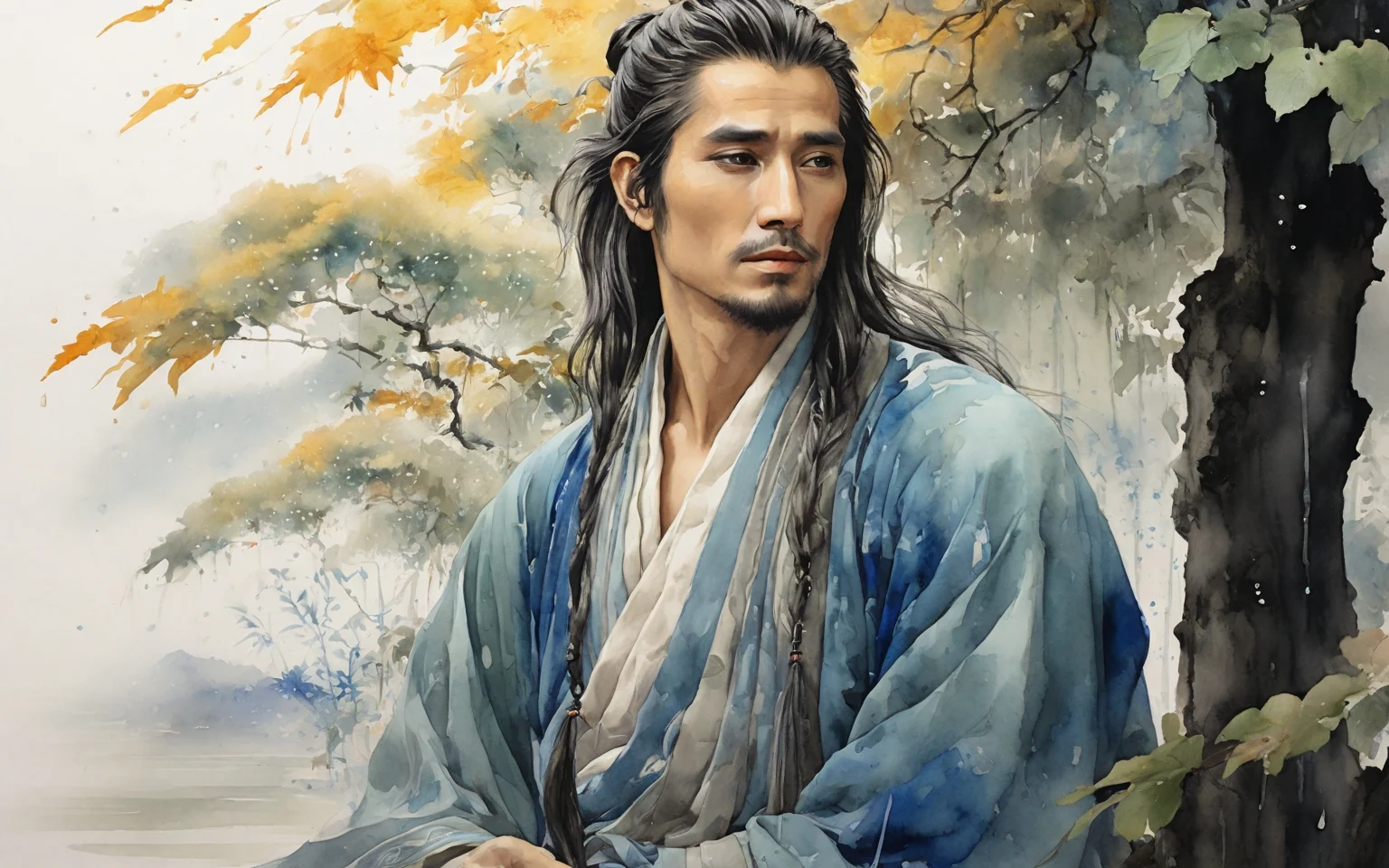
Du Fu (杜甫), 712 - 770 AD, was a great poet of the Tang Dynasty, known as the "Sage of Poetry". Born into a declining bureaucratic family, Du Fu had a rough life, and his turbulent and dislocated life made him keenly aware of the plight of the masses. Therefore, his poems were always closely related to the current affairs, reflecting the social life of that era in a more comprehensive way, with profound thoughts and a broad realm. In his poetic art, he was able to combine many styles, forming a unique style of "profound and thick", and becoming a great realist poet in the history of China.






